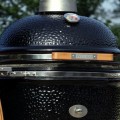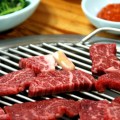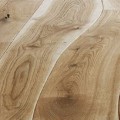Using a Wood-Burning Oven

Using A Wood-Burning Oven
Cooking with a wood-burning oven is a simple, quick and effective way of achieving an excellent bubbly, crispy texture and can impart your foods with a slightly smoky flavor. Our brick ovens are specifically designed to withstand North American climate extremes and may be used year-round. Cooking with a live fire may seem unfamiliar and complicated, but the method has existed for at least 250,000 years and possibly millions. Learning to Gauge temperature is a process that will be quick and intuitive with a small amount of practice, and the flavor and texture of your desserts, breads, or entrees will be unrivaled.
Type of Wood
The type of wood used in a wood-burning oven is important. Soft woods may light easily, but they will burn at a low temperature, their coals will not last as long, they will release more ash, they may be overly smoky, and the more resinous varieties may release toxins as they burn. Because of the risk of toxicity, never use resinous or treated woods. Wood-fired ovens are meant to be fueled with hard woods such as oak, almond, pecan, beech, birch, fruitwood, maple, etc.
Choose a wood that has been aged for at least 2 years and contains less than 25% moisture for a clean-burning, high-heat flame that is easy to ignite. An acceptable alternative is a hardwood that has been kiln-dried. Experiment with different hardwoods for various flavors and BTUs, but don’t worry about spending too much extra money on a specific variety of hardwood that may be expensive or hard to find in your area if your sole purpose is to impart a smoky flavor. Many experts suggest saving more-expensive, flavorful woods for your smoker to achieve maximum flavor intensity. In general, the texture and flavor created with clay or brick ovens is imparted through the high heat associated with cooking over a live flame.
Maintenance
Generally, once your oven is cured and ready for using to cook, the only maintenance involved is to brush out the ash and crumbs after the cooking process. Do not allow liquids to touch the hearth or dome. For example, if cooking steaks upon a grill grate, a bed of coals placed under the grate should be utilized to catch the drippings. A griddle could also be used as a basin for catching drippings.
To cure the oven, burn a few small fires prior to using it to cook food. Burning large fires in an uncured oven may cause your oven to crack.
Starting the Cooking-Fire
Start with a small fire and gradually build it up to raise the temperature to ensure the oven doesn’t crack. You’ll want to begin this process about an hour to an hour and a half prior to cooking.
Once the oven is heated to the desired temperature, it can be used for hours. If you’re planning on cooking multiple dishes, you may want to stagger your cooking process, cooking foods that require lower temperatures as your flame/coals begin to die and the temperature slowly decreases.
What Can I Make?
Want more ideas for what can be cooked in a wood-burning oven? These delicious and diverse recipes should keep an aspiring chef busy for quite some time.



